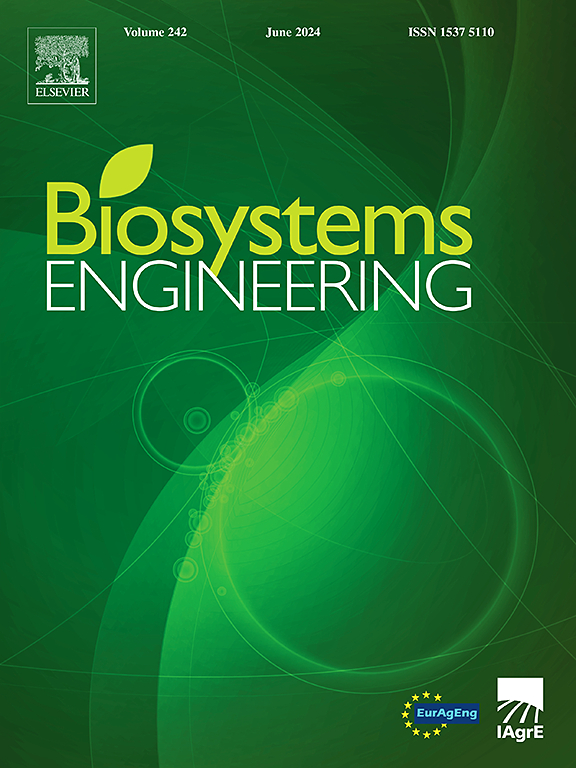林分形态对防风林遮蔽效率的影响
IF 5.3
1区 农林科学
Q1 AGRICULTURAL ENGINEERING
引用次数: 0
摘要
林分密度和种植点配置是影响防风林效率的两个关键参数。研究梭梭防风林林分密度和三角形植点配置对风速的影响。在A (17 cm × 17 cm)、B1 (17 cm × 34 cm)、B2 (34 cm × 17 cm)、C (34 cm × 34 cm) 4个不同尺寸的防风林上进行风洞试验,分别对应梭梭的田间密度1500株、750株、750株、375株·ha−1,也分别代表梭梭的种植密度、保留密度和自然植被密度。结果表明:风挡林附近风速变化较快,风挡林密度较高,排距B1;株距)比B2(株距>;行间距)。弱风速区(U/U0 <;0.5),大约是B2的3倍。防风林下游的风减量与林分密度不成正比,其比值为A:B:C≈6:3:2。随着林分密度的降低,Umin的位置进一步向下风移动,Umin值也随之增加。这些结果突出了林分密度和种植点配置对防风林效率的显著影响,为优化干旱地区的防风林设计提供了有价值的见解。本文章由计算机程序翻译,如有差异,请以英文原文为准。
Shelter efficiency of windbreak influenced by stand configuration
Stand density and planting point configuration are two critical parameters influencing windbreak efficiency. This study investigates how stand density and triangular planting point configurations affect wind speed in Haloxylon ammodendron windbreaks. Wind tunnel experiments were conducted on four windbreaks with varying dimensions: A (17 cm × 17 cm), B1 (17 cm × 34 cm), B2 (34 cm × 17 cm), and C (34 cm × 34 cm), corresponding to field densities of 1500, 750, 750, and 375 plants·ha−1, which also represented the planting density, reserved density and natural vegetation density of H. ammodendron, respectively. Results showed faster wind speed variation near windbreaks with higher densities, with windbreak B1 (row spacing > plant spacing) exhibiting faster variation than B2 (plant spacing > row spacing). The area of weak wind speed (U/U0 < 0.5) around B1 was approximately three times that of B2. Wind reductions downstream the windbreaks were not proportional to stand density, with ratios of A:B:C ≈ 6:3:2. The position of Umin moved further leeward as stand density decreased, accompanied by an increase in Umin values. These results highlight the significant influence of both stand density and planting point configuration on windbreak efficiency, offering valuable insights for optimising windbreak design in arid regions.
求助全文
通过发布文献求助,成功后即可免费获取论文全文。
去求助
来源期刊

Biosystems Engineering
农林科学-农业工程
CiteScore
10.60
自引率
7.80%
发文量
239
审稿时长
53 days
期刊介绍:
Biosystems Engineering publishes research in engineering and the physical sciences that represent advances in understanding or modelling of the performance of biological systems for sustainable developments in land use and the environment, agriculture and amenity, bioproduction processes and the food chain. The subject matter of the journal reflects the wide range and interdisciplinary nature of research in engineering for biological systems.
 求助内容:
求助内容: 应助结果提醒方式:
应助结果提醒方式:


